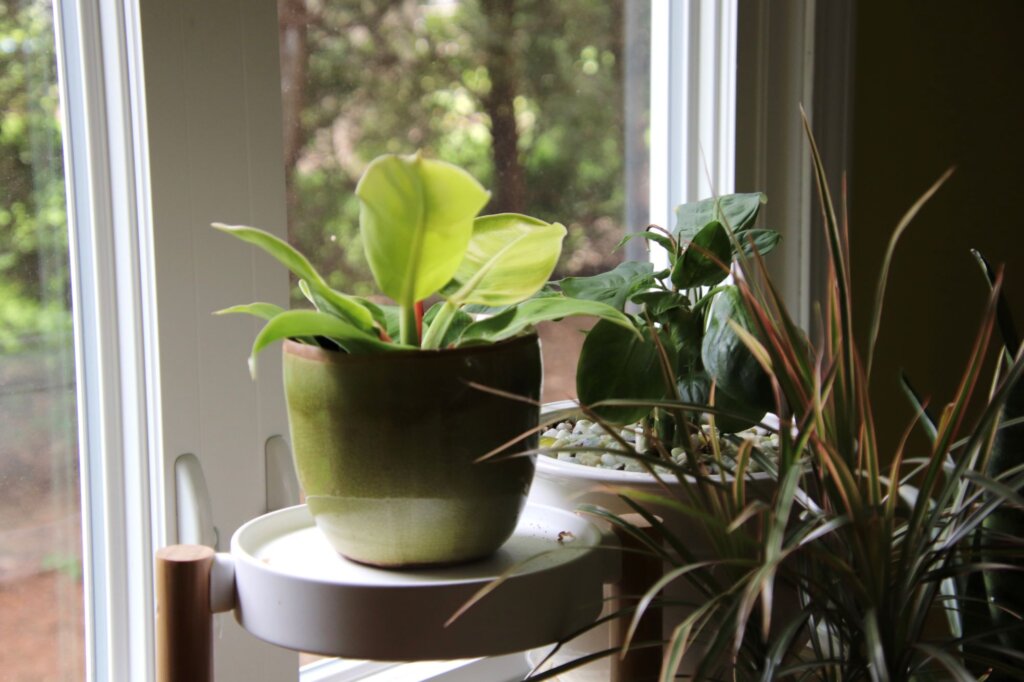With the right plants and arrangement, houseplants can add beauty and life to the interior design of your home. No matter how green your thumb may (or may not) be, here are some stylish and practical ways to incorporate greenery into your home décor.
1. Choose the Right Plants for Each Space
Not all plants thrive in the same conditions, so consider each room’s light and humidity levels. Plants that can survive lower-light conditions like snake plants and ZZ plants are great for areas that get more indirect light, while sun-loving plants like succulents and many tropical plants do well in brighter rooms. For bathrooms with a window, look for moisture-loving plants like ferns or philodendrons that thrive in humidity.
You’ll also want to think about the size of each plant—a large statement plant like a fiddle leaf fig, monstera, or bird of paradise can be a focal point, while smaller plants work well on shelves or tables.

2. Play with Different Containers
The pot or container is as much a part of the décor as the plant itself. Decorative planters in ceramic or concrete pots, woven baskets, or metal can complement various interior styles. Try to mix and match different shapes and materials to add visual interest without overcrowding the space. Consider hanging planters or wall-mounted options in smaller rooms to add greenery without taking up valuable floor space.
3. Use Plant Stands and Hanging Planters
Varying plant heights creates depth and dimension. Try using plant stands to elevate smaller plants or hanging planters to fill vertical space. Wall-mounted planters are also a great option for adding greenery near windows without taking up floor space, making them ideal for apartments or smaller rooms. Trailing plants in wall or hanging planters can create depth and add visual interest.
4. Create Plant Groupings
Grouping plants of different types or sizes can make a big visual impact. Place a cluster of small potted plants on shelves or a mix of taller and shorter plants to create a natural look that draws the eye. Grouping plants not only looks great, but it can also help increase humidity in the space.
5. Rotate Plants for Even Growth
Many indoor plants can grow unevenly as they reach for light, especially if they’re placed near a window or in a corner. Rotating them every few weeks helps encourage balanced growth and prevents them from leaning or becoming lopsided. As you rotate, take the opportunity to check the plant for any signs of pests or yellowing leaves so you can address any issues.
Don’t be afraid to experiment with different plants, arrangements, and containers to find what works best for your home. With the right plants and placements, you can transform your living area into a space that is fresh and vibrant.
